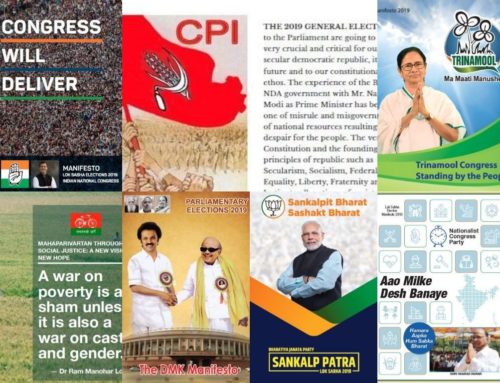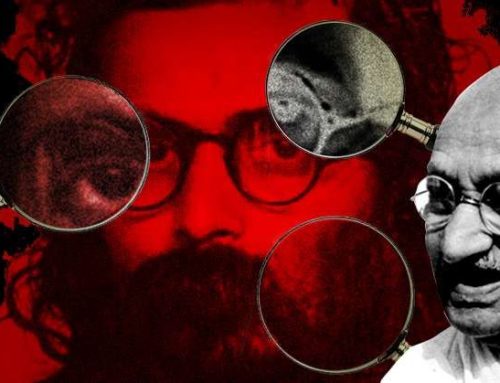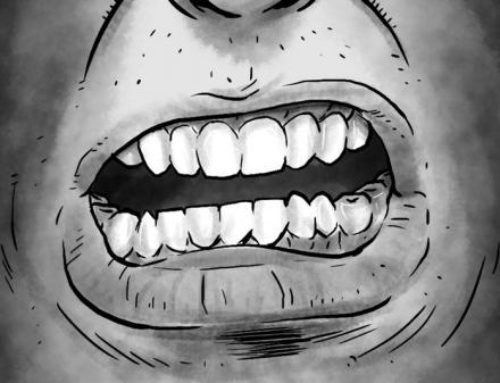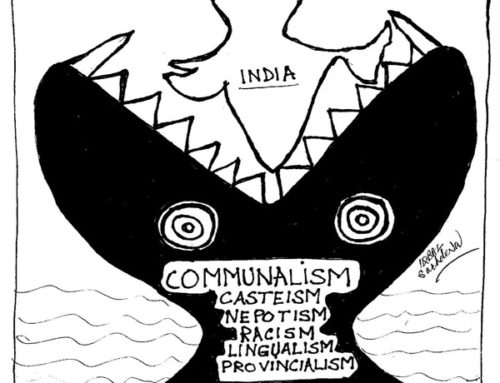FACT FINDING REPORT ON VIOLENCE AT TROMBAY POLICE STATION
by Meeta Tarani
(Secular Perspective July 1-15, 2017)
The Centre for Study of Society and Secularism (CSSS) conducted a fact-finding study in Cheeta Camp area of Govandi, where on March 17, 2017, a mob had attacked and vandalised Trombay Police Station. CSSS was founded by Dr. Asghar Ali Engineer, a renowned Islamic scholar and activist-reformer. It works to establish a just and peaceful society where all individuals respect each others’ religio-cultural views, diversity, uphold the dignity of all and ensure social justice and development for empowerment of the most deprived and marginalized. The Centre conducts seminars, public lectures, diversity camps for youth, and publishes articles and papers on communal harmony and peace. It regularly conducts fact-findings to examine incidents of communal violence in various parts of the country. The team sent by the Centre comprised of six people, all of whom were either current interns or had previously worked with the centre. These included Chiranshu Arora, Bodhika Darokar, Pranay Golchha, Ankita Kar, Asif Khan and Meeta Tarani.
The team conducted two field visits to Cheeta Camp on the 8th and 11th of May. During the course of these visits the team tried to speak to sources who were either directly or indirectly related to the situations preceding the attack, the attack itself and the events that followed it. As a part of the fact-finding, the team interviewed the Senior Inspector at Trombay Police Station, spoke to some hawkers and street vendors around the area as well as some eye witnesses and family members of some people named in the FIR.
On 18th March 2017, Arvind Chinwa, a resident of Cheeta Camp, allegedly uploaded a morphed picture of an Islamic religious site on Facebook. This hurt the religious sentiments of the Muslim community. Soon after the image was circulated through Whatsapp, another social media application, the members of the Muslim community in Cheeta Camp allegedly approached the police station demanding that an FIR be filed against Chinwa. Late in the night, violence erupted as a mob started vandalising the police station premises using paver blocks and empty bottles. A police jeep was lit on fire. To control the situation the police began lathi-charge started tear-gassing the mob. In the wee hours of morning, calm returned as the violence abated. An FIR was filed by the police naming certain people under sections 307, 120, 353, 332, 435, 110, 114, 112, 143, 144, 145, 147, 148 of the IPC. Arrests and investigations ensued. The Senior Inspector at Trombay Police Station, Annasaheb Sonnur, has been transferred since. He was replaced by Senior Inspector Sunil Gaonkar. There is roughly a broad consensus about happenings related to the event, but the gaps between these lend themselves to the insertion of varied perspectives on how things went down the day of the event, and the reasons for the actions of every party involved.
While Arvind Chinwa’s family refused to speak to us, the family of one of those accused in the attack said that Chinwa’s mother requested them to free him as his account had been hacked. Some hawkers around the area suggested that Chinwa, upon being approached by members of the Muslim community from Cheeta Camp, had actually admitted to uploading the picture, showed no remorse whatsoever, and refused to delete it. However, the police are investigating this as a separate case and it remains to be seen whether Arvind Chinwa was guilty of uploading the picture intentionally.
Some members of the Muslim community, also kin to those named in the FIR, said the police refused to file an FIR against Chinwa when people first approached them, citing it as a matter of cyber crime, which doesn’t fall under their area of jurisdiction. While some hawkers we spoke to were of the opinion that no FIR was filed, and that was the reason the mob resorted to violence, evidence shows otherwise. The FIR of the police against the mob attack mentions the FIR filed against Chinwa at around 11:00 pm on 18th of March. This was confirmed by the kin of two of those named in the FIR.
According to the FIR, a mob assembled outside the police station at around 23:00 pm. After an FIR was filed against Chinwa, a copy of the same was handed over to the mob by the complainant, Mr. Khwaja Mohammed Irshad Ahmed Khan. The mob then slowly started leaving the police station premises, and congregated at Deendayal Upadhyay Maidan near Cheeta Camp. At around 00:40 am on 19th morning, the mob started moving from the maidan towards the police station, and once there, began attacking the station “with the intention of fatally injuring the police officers” by throwing paver blocks, empty glass bottles and fireballs. According to the report, at least three government vehicles were vandalised, and around 7 rooms were damaged by the mob.
When we spoke to the kin of those who were named in the FIR, they said the FIR narrates an altered version of the events. While the FIR suggests that Mr.Khwaja Khan, Mr. Ahmed Ali, Mr. Ayyub Ali, Mr. Shahnawaz Shaikh, Adv. Jabbali Mohammed Hussain entered the police station with the mob at around 11 pm, this was not the case. According to them, the mob was initially just a group of 15-20 people (which mainly included youth aged 14-15 years) who went to the Police Station to file an FIR against Chinwa. This was because Chinwa had allegedly been taken into protective custody by the police, as his mausi (aunt) works as a maid at the police station. When this group approached the Police to file a complaint, the police allegedly refused, since it fell under the jurisdiction of the cyber cell. This led to the group staying back at the station to negotiate with the police. Gradually, the crowd swelled in size as people who were returning home from work went up to the police station to figure out what was happening, and joined the initial bunch of people in demanding the police that an FIR be filed. According to the families, the mob duly dispersed off after Mr. Jabbali (one of the people named in the report) showed them the copy of the FIR. This was around 12 am. They allege that the mob which actually attacked the police station comprised of people from the neighbouring areas of Baiganwadi and Shivajinagar (a notion shared by some of the hawkers we spoke to). The families allege discrepancies and arbitrariness in the manner of arrests that followed the attack. According to them, social and political leaders of the community, viz. Mr. Jabbali Hussain, Mr. Ahmed Ali were called by the police to aid them in pacifying the mob. Complying with the police they went and tried to reason with the crowd, and while some stayed till the crowd dispersed, some left immediately after their role was fulfilled. However, the police report names these very people of inciting the mob by playing on religious sentiments, while the charges include a conspiracy charge.
When we spoke to Senior Inspector Sunil Gaonkar at Trombay Police Station, he briefed us on the chronology of the events, but was not too specific about the details. On terms of full disclosure, the day the team visited the police station the second time, to speak to the Senior Inspector, it was a busy day at the Station as additional paramilitary forces had been deployed to assist the police for strategic reasons. He confirmed that there was a group of people who approached the police station to complain against Chinwa, and that despite the FIR being filed the people refused to leave, as they wanted Chinwa to be handed over to them. We asked him if the police called upon any social leaders from the community to talk to the people and pacify them, as they usually do. He replied affirmatively, saying that some leaders from the community had been called, who did speak to the crowd, but the crowd did not relent. When asked about the investigation process and the arrests that took place subsequently after the attack, he said that the police identified the accused using recognition and recall memory, along with some relevant footage from the CCTV cameras. He insisted that standard procedures were followed. However, lack of time due to aforementioned reasons warranted us from pursuing any further line of questioning.
A lot of questions have been raised regarding police action that followed the attack. Mr. Asim Jalal, an editor at Inquilab, the Urdu daily, said he was of the opinion that the police should not be the primary investigator in this case, as they were a party directly involved in the case. This view seems to be shared by some of the families of the accused and a few eye-witnesses too. Their primary conjecture is that the police has been acting out of pressure from their superiors and lashing out on the community, without following standard procedures. They narrated to us incidents of police brutality in dealing with suspects and their families. They mentioned specific cases of verbal abuse and violence being used wantonly while rounding up people for investigation. Their narrations of cases of the police beating youth aged 14-15 years, who were to appear for their SSC examinations, were particularly harrowing. While team was not able to pursue any of these leads, police brutality in India is not unheard of. It is a frequent occurrence, which is compounded by the fact that there is not much the common people can do to check the excesses of police power.
There is a belief among a certain population in the community that the police were complicit in the attack. They suggest that the police engineered the attack with the help of a political rival of the current Corporator, Shahnawaz Sheikh, and that the people involved in the attack did not belong to Cheeta Camp, but came from the neighbouring areas of Baiganwadi and Shivajinagar. While the latter’s motives were clearly political gains, they allege that the police orchestrated this to attain leverage against an RTI application that inquired the details of the recent construction work that took place at the Police Station. However, these seem like theories, and the ones proposing them did not have a lot of evidence to back this up.
The multiplicity of the narratives makes it difficult to understand and separate fact from fiction. The FIR of the attack does not mention that the police had called some of the influential members of the community to help them disperse the crowd, but rather names them as one of the attackers. It may seem like either the police may have taken undue advantage of the situation to settle old scores with some members of the community, or may have done so out of pressure as they were duty-bound to show some arrests in the aftermath of the attack. The latter does seem more plausible considering the lack of pursuit of the evidence trail that is usually followed by investigative procedures in this country. This is visible in Senior Inspector ‘s answer regarding the method used by the police to identify the attackers. Psychological studies have proven that memory is not a reliable tool in the justice system, and in this case, lends a dubious character to the arrests made by the police.
There are a number of theories about what incited the crowd to turn into a violent mob and start attacking the police station. The police believe it was a classic case of “taking the law into one’s hands”, and the refusal of the police to let the crowd to deal with the accused (Chinwa) directly angered the mob. A reporter from Sham TV, also a resident of Cheeta Camp, speaking on the condition of anonymity suggested the influence of drugs on the crowd, as he believed the crowd mainly consisted of drug-addicts. It is worth noting that drug addiction has rampantly increased in Cheeta Camp over the past few years. Also important to consider are the increasing political tensions in the region. While most residents we spoke to insisted that Cheeta Camp has been an extremely peaceful region, an epitome of syncretic coexistence, in recent years tensions have been building. This could be attributed to the advent of All India Majlis-e-Ittehadul Musilmeen(AIMIM) party to the region, for as Mr. Jalal put it, AIMIM has been known to arouse communal feelings in people’s minds. The attack on the police station was preceded by the recent BMC elections, in which Shahnawaz Shaikh, from AIMIM was elected as the corporator in the area. He was one of the people named in the FIR. It is plausible that Shahnawaz could have incited the mob for political gains. Shahnawaz’s entry into the political scenario in Cheeta Camp ousted the incumbent ex-corporator Khairunisa Hussain from the office (and thereby waned the power wielded by her husband, Akbar Hussain aka Raju Batla), which provided fertile ground for a political rivalry. If we were to follow the theory mentioned earlier, this political rivalry, too, could have motivated the attack. While it is all speculation to say which side of the political camp is guilty for the attack, or whether neither are, the tense political situations in Cheeta Camp did lead to the first communally charged incident in the region.
The impact of this incident on the everyday lives of the residents has been drastic. Businesses have been affected, as shops are being made to shut by 10 p.m. and hawkers are not allowed to carry out their business. The residents allege discrepancies, as bars are being allowed to be open till late night, while regular shops like a dairy shop were fined despite having permits to remain open beyond 10 p.m. The communalised atmosphere has changed the outlook of the police towards the residents, and even amongst the resident communities, prejudices have been festering. A number of parents are worried about the future of their children who were named in the FIR. While the justice system in this country takes its own sweet time, the accused are often made to bear exorbitant legal and social costs till their innocence or guilt is proven. If the police did follow an arbitrary manner in their arrests, it is appalling to see these people struggling to get their names absolved of a crime they did not commit. It is crucial that the police conduct their affairs as per standard procedures, following the evidence trail mandated by the justice system in this country. This is because when they do not do that, the lives of entire families are at stake. It is extremely necessary that the investigation process is undertaken with due diligence, by an investigative agency that was not directly a part of the incident, as the holes in the predominant narrative can only worsen the communal tensions in the community, and by extension, the society as a whole.
Findings
The team came to the following conclusions:
- The police had filed an FIR against Arvind Chinwa. The same was shown to the crowd that had gathered outside the police station.
- There are inconsistencies in most of the narratives. What is precarious though, are the inconsistencies in the police narrative.
- The police had called upon certain socially influential members of the community to come and talk to the crowd, and help pacify and disperse them.
- It seems that the police used excessive force during the investigative process and did not follow standard procedures or an evidence trail.
- Communal tensions have been building in the community for a while now. The advent of the AIMIM party to the region added fuel to the fire, and greatly communalised the atmosphere.
- The communalised atmosphere and the political rivalry brought in by the recently concluded elections suggest that one way or the other, political motives cannot be ruled out as a reason for the attack.
Recommendations
The team suggests the following recommendations:
- It is necessary that an independent investigative body looks into the incident, as a democracy encourages and ensures checks and balances in the power of authority. The police was directly involved in the incident, and hence there is an inherent bias if the police were to solely pursue the case. The economic and social burden is very high, not only on the accused, but also his/her family. Wrongful accusations can wreak havoc on the normal day-to-day lives of individuals, families and communities.
- The police should become proactive in checking communal tensions, rather than merely being reactive. It is crucial that they are not selective in their actions against issues, especially those of a communal nature.
- A peace centre should be set up within the community, consisting of proactive members of the both the minority and the majority community who will work together alongside the government and the community itself to increase communal harmony through increased contact, debunking prejudices and stereotypes and enhancing social participation in mutual events and activities.
- Cyber-sensitivity training and an increased awareness regarding the disastrous effects of abusing the cyberspace to propagate communal agenda should be introduced for members of the community. Sessions with the youth, specifically school dropouts and those engaging with substance abuse, pertaining to the dangers of cyber-bullying, trolling and the like could prove beneficial in curtailing the abuse of anonymity lent by the internet.






